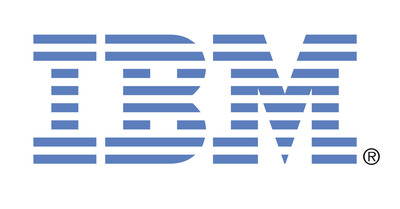IBM Shares Tips for Disaster Preparation
ARMONK, N.Y., Aug. 26, 2011 /PRNewswire/ -- Today IBM (NYSE: IBM) announced six tips that individuals and businesses can use to help prepare their IT environments for natural disasters and a wide range of other threats.
(Logo: http://photos.prnewswire.com/prnh/20090416/IBMLOGO )
According to some estimates, 2011 has become the year of billion-dollar disasters. This is apparent by the series of hurricanes and tornados in the United States' Midwest and Southeast, combined with this week's earthquakes on the East Coast, Colorado and Peru and the strong start to the hurricane season. With all of this activity, it's a safe assumption that natural disasters should be a top risk concern.
In preparation, many people in high risk areas are rushing to buy emergency supplies like flashlights, water and wood to board up their houses, but its important to also consider the preparedness of businesses and government agencies. Given these impending natural disaster and other top causes of disasters like power outages and network failure that disrupt the flow of information, businesses and individuals should also be assessing their business and disaster recovery plans before it's too late. In today's on demand environment, it's important to rapidly adapt and respond to risks, as well as opportunities, to maintain continuous access to data for personal and business reasons.
Following are IBM's tips for disaster preparedness:
-- Validate your data backup plan - Verify that your data is out of harm's
way and/or is accessible to your recovery location. Consider using a
cloud service to store key data and allow your organization more
flexibility to respond to changing conditions with minimal interruption
to the business.
-- Consider employees and the personal impact of a disaster - A company's
most important asset are their people, but the most important asset for
people are their families. Consider how you would move them and their
families if required, think about providing financial support to your
employees during a crisis event, and consider offering counseling to
help them deal with the aftermath of the crisis.
-- Develop various ways to communicate with employees, partners - After
people, the next most important element is communication. Communications
efforts must be timely, clear and honest, as miscommunication can make a
disaster even worse. Consider how you would communicate with your
employees, partners, clients, media, industry, and vice versa, what
training you have provided, what tools are you using and -- very
important -- test the communications plan.
-- Think about the "domino effect" when considering business risk - Years
of experience monitoring regional disasters has shown that these events
often create other events. For example, a hurricane normally has high
winds and heavy rains that can lead to flooding, structural damage,
power outage, telecommunication and/or travel disruptions.
-- Plan for catastrophic events that could last a while - For example,
businesses must consider the impact if the duration of the disruption to
the facility, network, technology, or people is longer than a period of
three days, one week, etc. Over the past decade, we have seen more
devastating disaster events with a longer term duration and financial
impact. Companies need to consider their options if their primary
environment or key people are not available for more than two weeks.
-- Think broadly - Each company is part of a supply chain or network. While
you may do everything right, if you have a critical partner, supplier,
vendor or provider of service, your preparedness is only as good as
those other businesses. As part of your disaster recovery plan, ensure
everyone upstream and downstream from your business is also prepared.
With more than 40 years of experience keeping businesses up and running, IBM uses its software, hardware and services expertise to help clients and individuals across the globe to protect their data. IBM helps them to manage risks, protect valuable business assets, comply with standards and regulations, and continue business operations.
"People and businesses are relying on technology now more than ever, which creates an urgent need to protect critical data and keep IT systems up and running when a natural disaster or other unexpected outage occurs," said Rick Ruiz, general manager of IBM's Business Continuity and Resiliency Services. "In these situations, it's clear that those who have moved from the old model of 'experience and react' to a new one of 'anticipate and adjust' will fare much better."
About IBM
IBM is a global technology and innovation company headquartered in New York with operations in over 170 countries. The company creates business value for clients and helps solve their problems through integrated solutions that leverage information technology and deep knowledge of organizational processes. These solutions draw from an industry leading portfolio of consulting, delivery and implementation services, as well as enterprise software, systems and financing.
IBM Media Contacts
Darcy Hansen IBM Media Relations 415-806-4139 hansenda@us.ibm.com
Tara Sucato IBM Media Relations 917-472-3701TJSucato@us.ibm.com
SOURCE IBM
